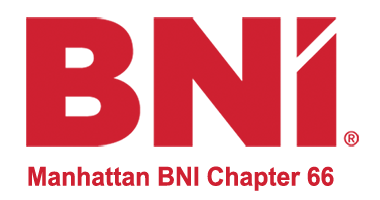by Ivan Misner (from one of his podcasts)
So I wanted to talk briefly about Contact Sphere and Power Teams, because they’re different, and we use both phrases.
Contact spheres I spoke about for the first time in a book, The World’s Best Known Marketing Secret. And a Contact Sphere is a group of business professionals that have a symbiotic relationship; they complement rather than compete with one another. A Power Team is a subset of that Contact Sphere. These are the people with whom you have a relationship with that are in your Contact Sphere that you’re actively engaging in a referral relationship. I would describe it as two concentric circles. The Contact Sphere is all of the people that you could potentially be in a symbiotic relationship with, and the Power Team is group of people that you actually have that symbiotic relationship with and are passing referrals to. So they are part of the overall Contact Sphere, potential professions that are synergistic with yours.
And I’ve talked about these in podcasts and in other venues. These are professions that just have that ability to refer one another, the financial planner, the banker, the attorney, people that have a similar type of client, and they’re servicing that client from a different perspective. My favorite one is the caterer, the florist, the photographer, the travel agent; I call that the wedding mafia. They’re referring each other like crazy, they’re working with each other a lot and referring one another to each other’s customers and clients. And so that wedding Contact Sphere or Power Team is a very, very important one.
Just so you understand the difference between a Contact Sphere and a Power Team, the Contact Sphere is all of the professions that theoretically can fit within your Power Team. The Power Team are those synergistic professions that you have a relationship with.
So in BNI, you want to try to create some really strong Power Teams, people that are in the symbiotic kind of a profession. One of the things I’ve kind of discovered over time is that BNI chapters that have at least three or four really active Power Teams tend to generate substantially more referrals that the average chapter. So if your chapter can focus on building some really strong Power Teams, you can substantially increase those referrals in the group, because oftentimes, one referral can be two or three referrals. If you have somebody that’s getting married, that can go to the caterer, the florist, the photographer. So one referral ends up going to three people. So the more Power Teams that you build in a chapter, the more successful it will be.
And I have one other suggestion, and then, Priscilla, if you want to chat about this or if you have any questions, I’d be glad to talk further. One thing that I’ve seen is it’s difficult for chapters to build those Power Teams, but when they do, they can really be powerful, very successful. But it’s possible to almost go too far. I’ve recently been seeing some chapters that have created such strong Power Teams that there’s almost a sense of exclusivity, where they’re being excluded.
For example, a lot of chapters may have a Power Team that meets aside from the BNI meeting; many of them I’ve seen have Power Team meetings once a month where the people in that Power Team are meeting and talking. So here’s something that I saw with a chapter that had that problem. They felt that their Power Teams had become so strong and so powerful that the people who weren’t in them felt left out. So here was something that I thought was just brilliant. What they started to do to come across as more inclusive with their fellow BNI members was that at each one of their Power Team meetings they invited someone who was not in the Power Team. They started with people in other Power Teams first, and then they went to people who weren’t in any Power Team. And they always invited at least one person who was not part of their Power Team to sit in on the discussion that the Power Team was having about, where they were, what potential clients they had, what clients they were about to pick up, whatever the topic of discussion. There was somebody that was not in the Power Team who was present.
And the beauty of that is twofold. First, there’s a sole sense of inclusion, and so they didn’t feel clique-ish. It’s possible for them to come across as clique-ish unless they’re cognizant of being inclusive. And the second thing was it gave people from other Power Teams great ideas of how to effectively use a Power Team, because they saw what others were doing.
And so this chapter went from starting to have the sense of Power Teams almost being clique-ish to Power Teams being a great tool for inclusiveness and for learning how to do this thing called networking more effectively.
